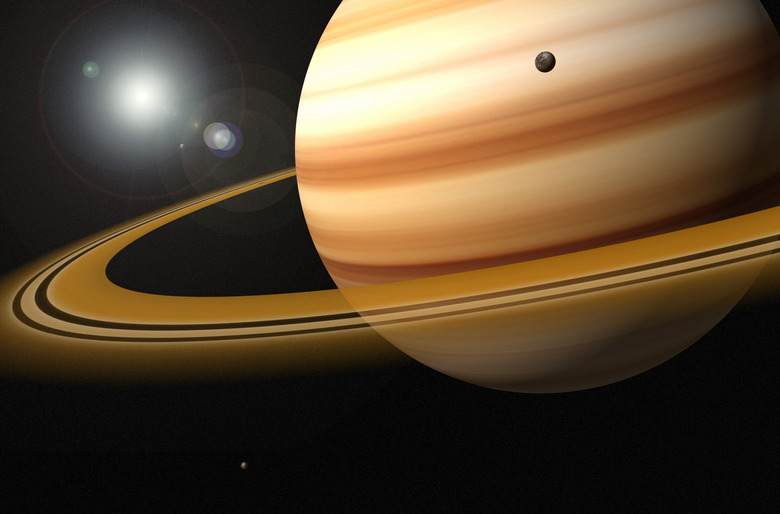How Close Are The Rocks In Saturn's Rings
Saturn is surrounded by a disk of rocks and ice fragments traveling on concentric, near-circular orbits in the planet's equatorial plane. Seen edge-on, the disk is extremely thin — only a few tens of meters in places. Seen face-on, the disk gives the appearance of numerous concentric rings, due to systematic changes in the properties of the disk as a function of distance from the planet. The rings can be characterized by a number of parameters, one of which is the average separation between the constituent fragments.
Ring Particles
Ring Particles
Scientists use the generic term "particles" to refer to the constituents of a planetary ring system. Although "particle" suggests something very small, the largest objects in Saturn's rings are sizable rocks or chunks of ice — often many meters across. A whole spectrum of particle sizes is present, from these large objects down to dust grains. The number of particles of a given size is, in approximate terms, inversely proportional to particle mass: In other words, small particles are more numerous than large particles.
How Much Matter Is in the Rings?
How Much Matter Is in the Rings?
The density of Saturn's rings varies considerably: This is one of the reasons for the apparent banding of the rings. The easiest parameter to calculate directly is the surface density, measured in grams per square centimeter. This can be divided by the thickness of the ring to give volume density in grams per cubic centimeter. Another property scientists can measure is called the optical depth, which indicates how opaque or transparent the rings are. Optical depth is a function of surface density and particle size, so the latter can be deduced — even if it is not observed directly — from measurements of density and optical depth.
The Distance between Ring Particles
The Distance between Ring Particles
Compared with most other astronomical objects, the ice and rock particles in Saturn's rings are extremely close together. On average, about 3 percent of the total volume of the disk is occupied by solid particles, while the rest is empty space. This may sound small, but it means the typical separation between particles is only a little over three times their average diameter. Assuming a value of 30 centimeters for the latter, the rocks would be as close as one meter away from each other. There is no hard and fast rule, however, due to density variations across the rings and the wide spectrum of particle sizes.
Close Encounters
Close Encounters
The close proximity of the ring particles to each other means that collisions between them occur quite often, leading to the dissipation of kinetic energy. The cumulative effect of countless collisions in the past can be seen in the razor-like thinness of the disk and the near circularity of particle orbits. In addition to physical collisions, the particles interact with each other gravitationally, as well as with Saturn itself and its many satellites. Much of the fine structure seen in Saturn's rings can be explained by such gravitational interactions.
Cite This Article
MLA
May, Andrew. "How Close Are The Rocks In Saturn's Rings" sciencing.com, https://www.sciencing.com/close-rocks-saturns-rings-13152/. 24 April 2017.
APA
May, Andrew. (2017, April 24). How Close Are The Rocks In Saturn's Rings. sciencing.com. Retrieved from https://www.sciencing.com/close-rocks-saturns-rings-13152/
Chicago
May, Andrew. How Close Are The Rocks In Saturn's Rings last modified March 24, 2022. https://www.sciencing.com/close-rocks-saturns-rings-13152/
